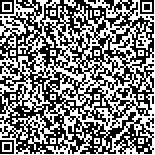下载中心
优秀审稿专家
优秀论文
相关链接
摘要

电荷耦合器件(CCD)是卫星应用的主流成像器件,其受空间辐射环境影响易产生辐射效应,导致卫星成像性能退化,因此CCD的在轨辐射效应分析对卫星在轨风险评估、在轨维护具有重要意义。针对空间碎片探测试验卫星成像CCD在轨出现的辐射效应,通过在轨图像数据计算,对辐射作用于CCD导致的瞬时效应、热像素、电离总剂量效应和位移损伤进行了估算。分析认为瞬时效应主要源于南大西洋异常区内高能质子入射器件导致的瞬间电离作用;热像素源于质子辐射导致的单个像素位移损伤,且数量随着在轨时间的累积不断增加,与瞬时效应无明显的相关性;在轨初期累积的电离总剂量效应和位移损伤并不突出;热像素是影响探测器光电探测性能的主要问题,在较低粒子注量时就比较显著。上述工作为卫星在轨风险评估与运行管理收集了数据依据,并初步形成了针对在轨运行光电探测载荷辐射效应分析方法,可为天基目标探测卫星成像器件的在轨辐射效应分析、抗辐射设计提供参考。
High-performance Charge-Coupled Devices (CCDs) are the preeminent detectors for space-based photoelectric detection. However, the vulnerability of CCDs to radiation damage in the space radiation environment is a serious threat to space imaging applications in terms of earth-observing spectral measurement and space debris detection. Observing the in-orbit radiation effects of CCDs used in a space imaging system is crucial. This kind of work can provide essential data for the in-orbit maintenance and future design of a space mission.
Through calculation and analysis using plenty of in-orbit images generated by a space debris detection experiment satellite, several kinds of imaging abnormalities caused by the space radiation environment of the satellite are observed. The radiation damage on the CCD imager used in the satellite's visible camera is assessed. First, the abnormal phenomenon of imaging functions is described. Second, transient effects and hot pixels induced by protons in the space environment are analyzed. In addition, the total ionizing dose effects and displacement damage of the CCD imager are estimated to help predict the long-term in-orbit performance of the device.
The transient effects mainly result from the instantaneous ionization in pixel structures induced by protons from the South Atlantic Anomaly (SAA). When the satellite traversed the SAA, the number of transient effects is changed in proportion to the proton flux in this position in the SAA. The number of transient effects for one traversing agrees with the Gaussian distribution. All the hot pixels present a high dark current several times larger than that of most normal pixels. The number of hot pixels increase with the time in-orbit of the satellite. The increase is almost linear with the run time or the times passed through the SAA. The hot pixels are mainly attributed to the single particle displacement damage induced by energetic protons in the SAA. No observable correlation is noted between hot pixels and transient effects. The principal influence on the CCD imager is the increase of hot pixels with the time in-orbit. Even in the early stage after the launch of the satellite, the influence of CCD's hot pixels may be significant, an outcome that is clearly different from the accumulated radiation damage (total ionizing dose effects and accumulated displacement damage) on CCDs.
The results of the above work suggest that critical information is obtained for operational risk assessment and in-orbit management of the satellite. In addition, the methodology is formed for in-orbit radiation degradation prediction on image sensor and optical payload. The method may be useful for radiation hardness on a space-based debris detection satellite, which is situated in either low or high earth orbit. The mechanisms of hot pixels generated by proton bombardment still require further study.

